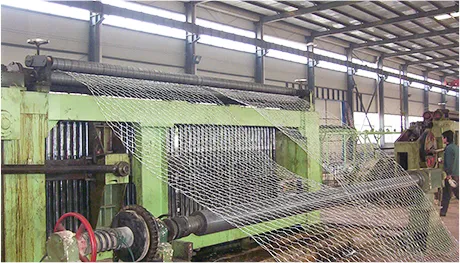-
 Phone:
Phone: -
 Email:
Email:

rockfall netting
Rockfall Netting An Innovative Solution for Landslide Prevention
In recent years, rockfalls have become a significant concern in mountainous and hilly regions, posing threats to infrastructure, human safety, and the environment. The phenomenon of rockfalls can be triggered by various factors, including weather conditions, geological features, and human activities. To mitigate these risks, engineers and geologists have developed a range of preventative measures, one of the most effective being rockfall netting. This article delves into the concept of rockfall netting, its applications, benefits, and the technology behind it.
Understanding Rockfalls
Rockfalls occur when rocks or boulders detach from steep slopes or cliffs and fall to the ground due to gravity. Factors contributing to rockfalls include freeze-thaw cycles, erosion, seismic activity, and other geological processes. The consequences can be devastating, as falling rocks can damage roads, buildings, and critical infrastructure, jeopardizing safety and economic activities. Hence, the need for effective solutions to prevent these occurrences is paramount.
What is Rockfall Netting?
Rockfall netting is a protective measure designed to stabilize slopes and prevent falling rocks from reaching downhill areas. It involves the installation of flexible nets made from high-strength materials, which are anchored to the slope to catch and hold any loose rocks. This proactive approach to slope stabilization not only protects against rockfall impacts but also serves as a deterrent against erosion and weathering.
Applications of Rockfall Netting
Rockfall netting is widely used across various industries and sectors. It is particularly common in construction projects, highway maintenance, and mining operations. In road construction, for instance, netting is often installed along highways that traverse mountainous terrains to protect motorists from potential rockfalls. In mining, rockfall netting helps ensure the safety of workers by maintaining controlled environments around excavation sites.
Additionally, rockfall netting is used in the context of environmental conservation
. It contributes significantly to restoring and protecting natural habitats by stabilizing soil and reducing erosion. By minimizing human intervention and enhancing natural slopes, rockfall netting can facilitate ecological balance in sensitive regions.rockfall netting

Advantages of Rockfall Netting
One of the primary benefits of rockfall netting is its efficiency in preventing large-scale rockfalls. The nets are designed to withstand substantial weight and energy, effectively capturing falling debris before it can cause serious damage. This ability not only safeguards infrastructure but also minimizes repair and maintenance costs associated with rockfall damage.
Moreover, rockfall netting is a cost-effective solution compared to other forms of stabilization, such as rock bolting or retaining walls. The installation process is relatively quick and non-invasive, preserving the natural landscape while providing necessary protection.
Another significant advantage is the customization of netting solutions to suit specific site conditions. Engineers can design and deploy netting systems according to the geological characteristics, slope angles, and expected rockfall sizes, ensuring tailored protection that meets the unique needs of each location.
Advancements in Technology
Technological advancements have played a crucial role in the development of modern rockfall netting systems. Innovations such as high-tensile steel cables and advanced synthetic materials have enhanced the strength and durability of netting products. Additionally, the integration of monitoring systems allows for real-time assessment of slope stability and net performance, enabling timely responses to potential rockfall hazards.
Conclusion
In conclusion, rockfall netting is an essential tool for managing the risks associated with rockfalls in various environments. By stabilizing slopes and preventing falling debris from causing damage, it enhances safety and protects infrastructure. Its adaptability to different conditions, cost-effectiveness, and technological advancements make rockfall netting a go-to choice for engineers and scientists dedicated to promoting safety in geologically vulnerable areas. As we continue to face challenges from natural disasters and geological shifts, the importance of implementing robust rockfall management strategies like netting cannot be overstated. This innovative solution not only protects lives and property but also contributes to the sustainable management of our natural landscapes.
-
Wire Mesh for Every Need: A Practical SolutionNewsJul.25,2025
-
Steel Fences: Durable, Secure, and Stylish OptionsNewsJul.25,2025
-
Roll Top Fencing: A Smart Solution for Safety and SecurityNewsJul.25,2025
-
Cattle Farm Fencing Solutions for Maximum SecurityNewsJul.25,2025
-
Affordable Iron Binding Wire SolutionsNewsJul.25,2025
-
Affordable Galvanized Wire SolutionsNewsJul.25,2025
-
Wire Hanger Recycling IdeasNewsJul.25,2025








